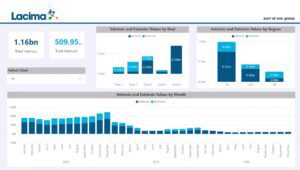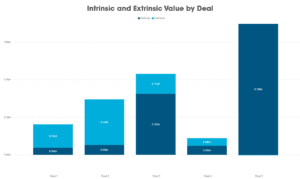 In more stable markets, focusing solely on intrinsic deal value was enough. However, today’s unpredictable environment has upended the reliability of past approaches, and companies who overlook the importance of extrinsic value are at risk of missed opportunities, or worse.
In more stable markets, focusing solely on intrinsic deal value was enough. However, today’s unpredictable environment has upended the reliability of past approaches, and companies who overlook the importance of extrinsic value are at risk of missed opportunities, or worse.
Why Traditional Valuation Approaches No Longer Suffice
Consider LNG markets before COVID-19: they were comparatively stable, allowing players to rely on intrinsic deal values based on static price models. Flex components were valuable but manageable. Fast forward to today’s highly volatile markets, influenced by supply chain disruptions, global conflicts, and economic and political uncertainty. In this new landscape, extrinsic value can vastly outstrip intrinsic value and so the methods of old no longer stack up.
Whereas flex options were once added to deals as incentives to complete a deal, today their value forms part of the deal and so must be justified. The complexity and number of flex provisions within contracts have also grown, and knowing when to exercise these options can make or break a deal. For instance, UQT and DQT options, with caps or carry-forward or make-good clauses in the terms, can hold substantial value but require careful assessment of their timing and worth.
Flex components can now represent 10 times the base value of a deal or more. A deal with an intrinsic value of $3/MMBtu could reach a total extrinsic value as high as $30 to $40 per MMBtu. Given typical LNG volumes, this could equate to billions of dollars over a contract’s lifespan. Such sums mean individual deals can significantly impact a company’s financial stability.
What are Flex Components?
‘Flex components’ are contractual provisions within LNG transactions that offer buyers and sellers adaptability in response to fluctuating market conditions, operational requirements, and strategic goals. Common examples include price/location flexibility, volume flexibility, as well as DQT (Downward Quantity Tolerance) and UQT (Upward Quantity Tolerance). These options offer important levers to optimise an LNG deal.
Calculating a deal’s value with flex options while assuming stable prices (known as ‘intrinsic value’) can be complex yet achievable. However, determining the total value, which accounts for flex options under real-world volatility, requires sophisticated price modelling and an advanced LNG valuation engine. The extrinsic value derived from this volatility is the difference between total and intrinsic value.
As shown in the chart below, the intrinsic and extrinsic values vary widely across five deals. In some cases, like deal two, extrinsic value makes up the majority of the revenue, while in others, such as deal five, it is almost entirely intrinsic. This example illustrates how accurately calculating these values is essential to understanding a deal’s profitability.
So what can you do about it?
Here are six key steps follow to make sure you stay on the right side of an LNG deal:
- 1. Determine the base value of the deal
Start by analysing the base value of a deal – its value with no flex options applied under a static price model.
- 2. Calculate the expected value of flex options
Next, quantify the impact of each flex option by identifying and modelling key variables for each to assess their potential contribution to the deal’s value.
- 3. Assess the interplay of flex term
Not all flex options are mutually exclusive. Activating one can overlap another, or unlock additional options. For example, using a UQT option to take on an extra cargo may provide additional location or volume flexibilities, while a DQT option could overlap with a volume flex option.
- 4. Simulate All Flex Options During Deal Assessment
Analysing possible volatility shocks in simulations at the deal analysis stage is crucial to fully understand the impact of flex components. However, deal negotiations are rarely linear and additional flex options may be included or removed during discussions. Modelling these scenarios helps you negotiate possible inclusions/exclusions and understand the potential impact of any counter-options proposed by the seller. Conducting this work up front also ensures you’re well-informed to make decisions once the deal is active.
- 5. Ensure Sufficient Flexibility in the Deal
In volatile times, flex options are vital to optimising profitability throughout a deal’s lifespan and to providing recourse in adverse conditions. Being able to avoid or minimise losses when prices are unfavourable can depend on having enough flexibility built into the contract.
- 6. Conduct Regular Deal Simulations
Once a contract is in place, continue simulating flex options regularly, especially ahead of each new cargo delivery, as market conditions and prices shift to understand if and when to exercise your flex components.
The below chart displays an LNG portfolio’s intrinsic and extrinsic value split across five deals, three regions, and monthly values over three years, underscoring the importance of viewing an LNG portfolio through intrinsic and extrinsic lenses. Recognising value across these dimensions is crucial for successful LNG deal and portfolio analysis.
Quantifying Extrinsic Value: A Complex but Vital Process
Determining extrinsic value requires a robust simulation and valuation engine, supported by sophisticated quantitative models. If you need additional support or guidance in this area, don’t hesitate to reach out to the experts at Lacima.
